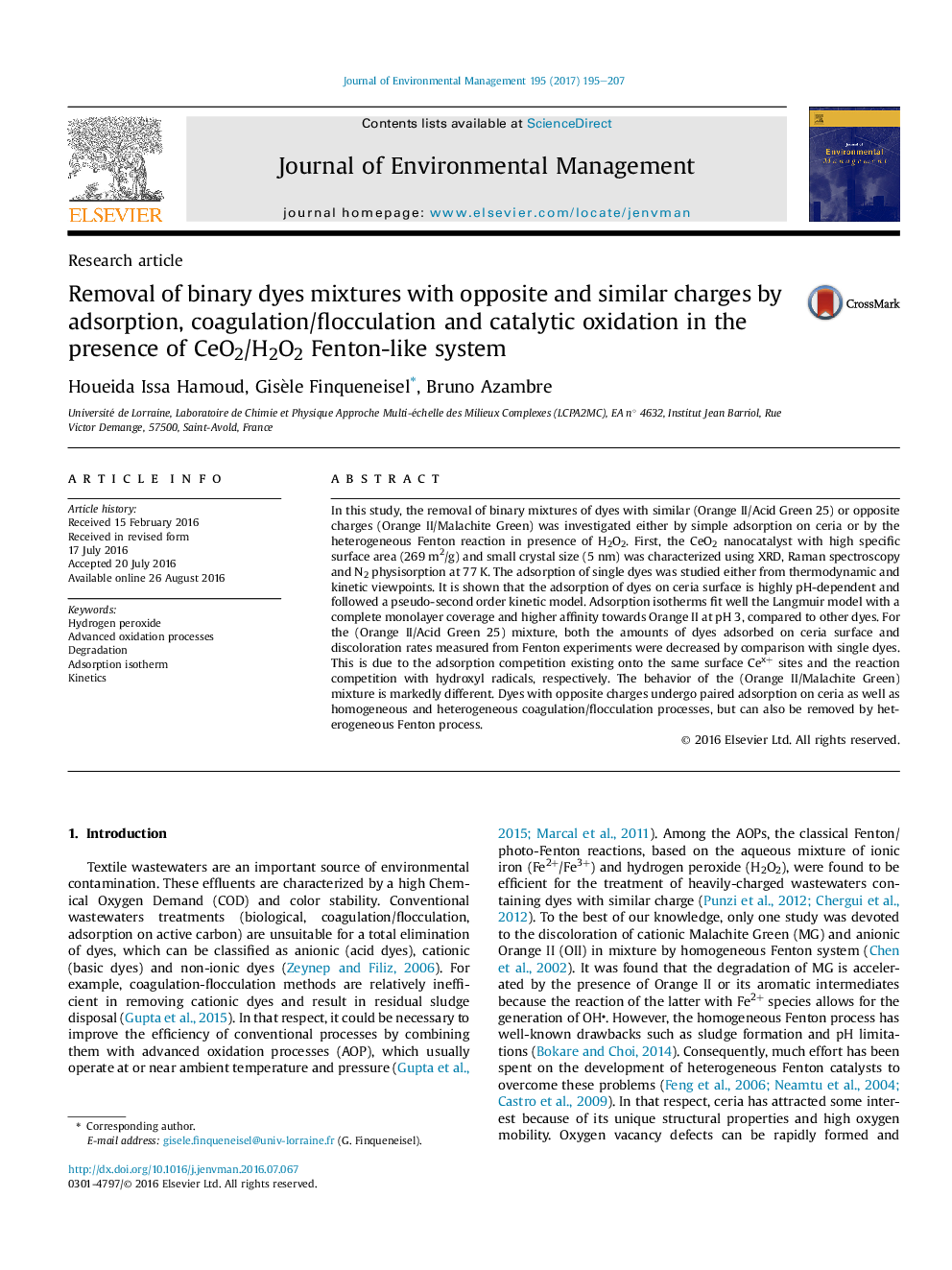| Article ID | Journal | Published Year | Pages | File Type |
|---|---|---|---|---|
| 5117011 | Journal of Environmental Management | 2017 | 13 Pages |
â¢Nanoceria showed suitable properties for dye removal by adsorption and Fenton process.â¢Competitive adsorption and degradation for mixture of dyes with similar charges.â¢Removal of cationic dye is improved in mixture compared to monocomponent system.â¢Removal of dyes with opposite charge by coagulation/flocculation and Fenton process.
In this study, the removal of binary mixtures of dyes with similar (Orange II/Acid Green 25) or opposite charges (Orange II/Malachite Green) was investigated either by simple adsorption on ceria or by the heterogeneous Fenton reaction in presence of H2O2. First, the CeO2 nanocatalyst with high specific surface area (269Â m2/g) and small crystal size (5Â nm) was characterized using XRD, Raman spectroscopy and N2 physisorption at 77Â K. The adsorption of single dyes was studied either from thermodynamic and kinetic viewpoints. It is shown that the adsorption of dyes on ceria surface is highly pH-dependent and followed a pseudo-second order kinetic model. Adsorption isotherms fit well the Langmuir model with a complete monolayer coverage and higher affinity towards Orange II at pH 3, compared to other dyes. For the (Orange II/Acid Green 25) mixture, both the amounts of dyes adsorbed on ceria surface and discoloration rates measured from Fenton experiments were decreased by comparison with single dyes. This is due to the adsorption competition existing onto the same surface Cex+ sites and the reaction competition with hydroxyl radicals, respectively. The behavior of the (Orange II/Malachite Green) mixture is markedly different. Dyes with opposite charges undergo paired adsorption on ceria as well as homogeneous and heterogeneous coagulation/flocculation processes, but can also be removed by heterogeneous Fenton process.
